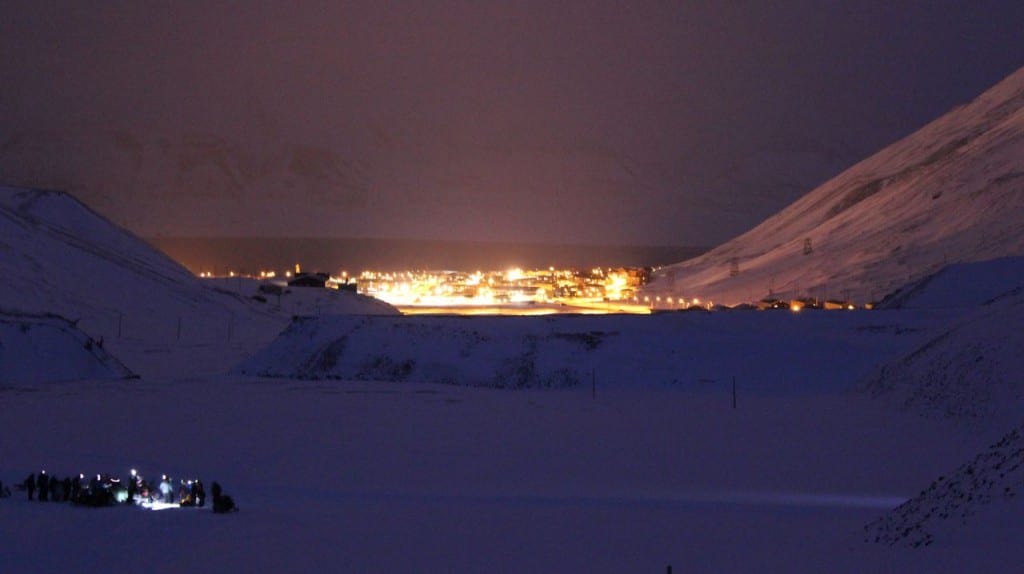Arctic Field Training in Svalbard (Spitsbergen)
By Stanislav Pavlov, on 29 April 2013
Arctic sea ice cover has had a high profile in the media over the last few years. There has been a growing interest in the region from across the scientific community, such as oceanographers and marine engineers in particular. The Arctic ice cover has reduced, allowing increasing access to the natural resource base in the arctic and has the potential to open new shipping routes.
As part of my PhD project researching the risks of Arctic offshore operations we were invited to participate in a field training course organized by the University Centre of Svalbard (UNIS) in Svalbard – far in the Arctic north. Together with Prof. Peter Sammonds we left the relative luminosity and warmth of London to arrive in Longyearbyen, the world’s northernmost town at 78°North, during the peak of the polar night season.
Over the course of one week we practiced skills, both indoors and in the field, essential for work in the Arctic region. These included first aid, sea and emergency rescue, rifle training, crevasse and avalanche rescue etc. Activities that would otherwise seem relatively mundane were much more difficult to accomplish in the freezing cold. Tasks such as setting up camp or equipment, were made much more difficult by several layers of clothing and necessitated efficient team effort. The wind and visibility were key unpredictable variables that would change the conditions in a very short space of time.
It was refreshing to see many participants in the safety course, highlighting the number of scientists who are working on understanding the arctic environment. The equipment given to participants in field experiments was excellent and the rescue service in Svalbard was second to none.
During our stay we understood the importance of the skills needed to operate in this fragile and ever changing environment. In addition we were in an excellent position to observe and absorb the unusual Arctic environment. In particular we were surprised to find that the ice cover did not extend to the main part of the island, and was only partially covering the northeasterly corner of the island. This was not surprising as the ice cover has been at its lowest levels in past few years.
It was easy to see that with the lower levels of ice cover, an increasing exploration of these areas will be very likely in the near future. As with any oil exploration there are many risks involved in the operations. The key for our research at IRDR is to research the associated risks involved in such activities. So far there have not been any major incidents in the Artic seas, but with ever increasing activity in the region the understanding of the risks is vital in preventing and dealing with any possible future disasters.
Our visit to the Arctic was an amazing experience and the completion of the safety course will allow us to participate in future fieldwork projects within Svalbard and obtain valuable field data to further our understanding of the Arctic sea ice.
 Close
Close



